What is Executive Development?
Executive Development is an ongoing process that helps managers gain knowledge, skills and abilities to handle current situations in a more efficient manner and get matured to handle future challenges successfully.
Executive development is also known as management development. It is one of the fastest developing areas in personnel. It is realized that an effective management team may be as important to the survival of an organization as any tangible item on the balance sheet.
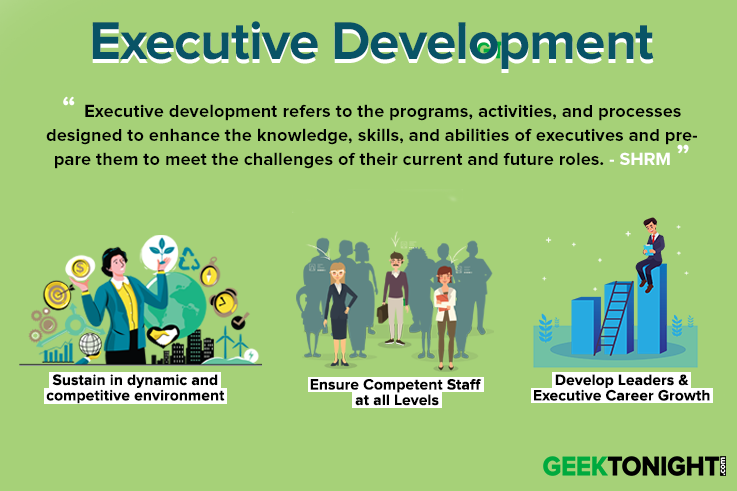
Table of Content
Executive Development Definition
Peter Drucker defines it as, “An institution that cannot produce its own managers will die. From an overall point of view, the ability of an institution to produce a manager is more important than its ability to produce goods efficiently and cheaply”.
According to Flippo, Executive development includes the process by which managers and executives acquire not only skills and competency in their present job but also capabilities for future managerial tasks of increasing difficulty and scope.
According to Johnson and Sorcher, Management development focuses on developing in a systematic manner, the knowledge base, attitudes, basic skills, interpersonal skills and technical skills of the managerial cadre.
Executive development refers to the programs, activities, and processes designed to enhance the knowledge, skills, and abilities of executives and prepare them to meet the challenges of their current and future roles. – Society for Human Resource Management (SHRM)
Objectives of Executive Development
4 major objectives of executive development are:
- Sustain in a dynamic and competitive environment
- Ensure competent staff at all levels
- Develop leaders
- Executive Career Growth
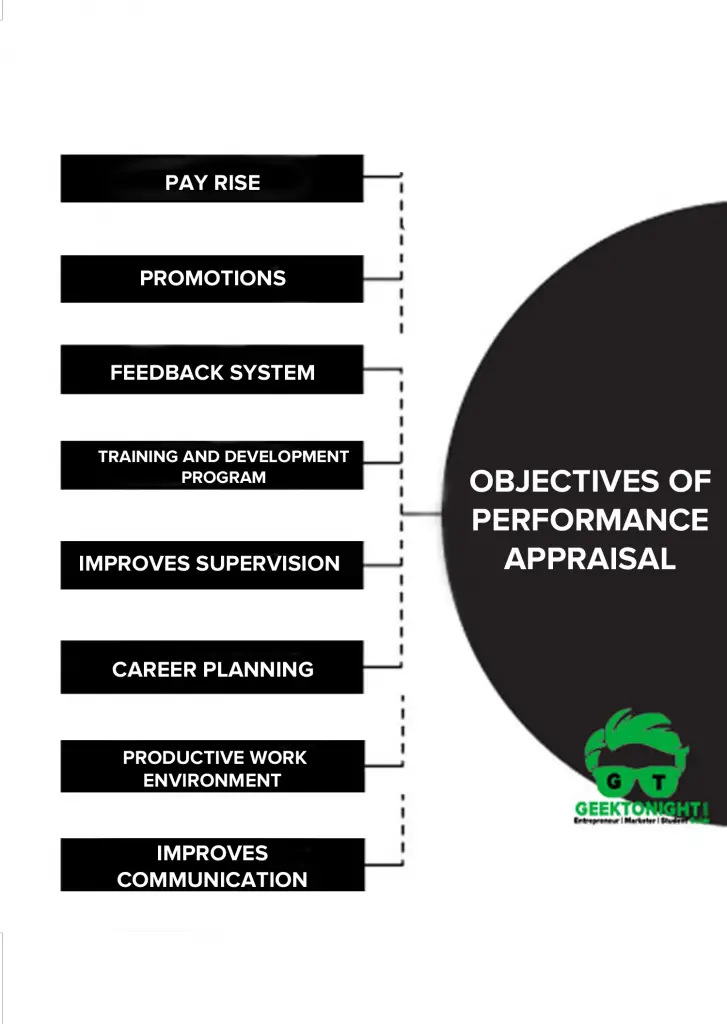
Sustain in a dynamic and competitive environment
In today’s dynamic world where there is huge competition, it is very important to stay abreast with the latest technologies, business processes etc. Managerial obsolescence is avoided by investing in the executives to acquire knowledge, skills and abilities.
They need to be efficient and competent enough to be able to deal with market forces and stay ahead of the competition.
Ensure competent staff at all levels
There needs to be a competent staff at each level of the organization so that bottleneck can be avoided and business can smoothly run. Executives at each level should be good performers and their potential should be fully exploited.
Develop leaders
There needs to be a competent staff. Executive development is a futuristic and long term process. It not only helps the executives perform their current jobs in an efficient manner but also teaches them how to get prepared for larger roles.
- It creates leaders from within the organization.
- It helps them grow to look at different business situations in a matured manner, broaden their outlook, enhances their ability to make the right decisions, improves their communication skills.
- Executives at each level should be good performers and their potential should be fully exploited.
Executive Career Growth
It plans the career growth for the executives. It not only enhances their business skills but also helps them grow personally and become better human beings. They are prepared for higher roles so that they can be promoted in future.
- It leads to an increase in their morale, self-confidence and commitment to the organization.
- They feel assured that their career goals can be met in the current organization, it leads to retention of employees and they do not feel the need to leave the organization for greener pastures.
Importance of Executive Development
Executive development is important for the following reasons:
- Executive development programmes are required to train and develop professional managers.
- It helps managers to develop skills to face cut throat competition.
- It enables managers to face problems related to technology and institution.
- It helps in developing better relations with the labors.
- Executives need training and education to understand and adjust to changes in socio-economic changes.
- Executive development is required to broader the outlook of managers.
Factors Influencing Executive Development
- Failure to train the managers will lead to ineffective and inefficient managers who negatively affect the organization’s performance.
- In the absence of training and developmental avenues, the performing managers may get demotivated and frustrated in leading the organizations.
- The organizational performance may be affected by the loss of market shares, lower sales, reduced profitability, etc.
- The absence/ shortage of trained and skilled managers make it important for organizations to have appropriate retention strategies.
- The competitive pressures make it necessary for organizations to continuously roll out new products and services, and also maintain the quality of the existing ones.
- The competitive environment is making it imperative for the organizations to continuously restructure and re-engineer, and to embark upon these processes, it is essential for the organizations to train the managers for the new scenarios.
Methods of Executive Development
Executive development methods can be broadly divided into the following two categories:
Methods of Executive Development are:
- Coaching
- Job Rotation
- Understudy
- Projects and assignments
- Lectures
- Conference
- Business Games
- Case Study
- Role playing
- Sensitivity Training
- In basket technique
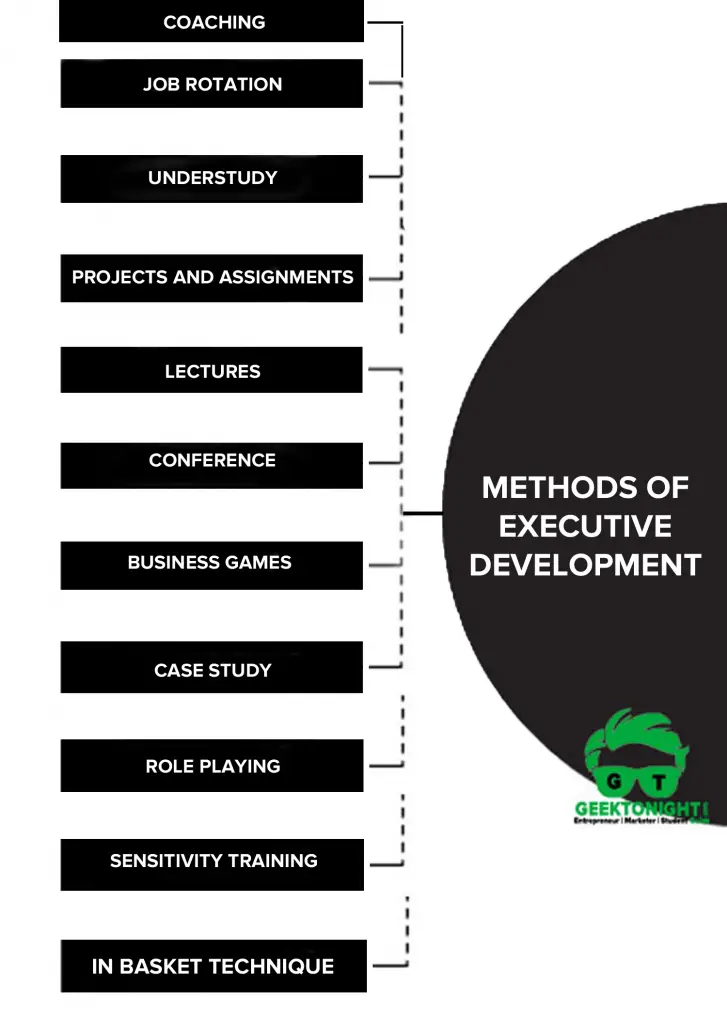
On the Job Training
Under on the job training the employees get trained while doing their day to day job. Skills are gained while employees are carrying out their daily tasks and responsibilities.
They learn in the real work environment by facing challenges and situations and solving them under the guidance of a much superior and experienced employee.
On the job training can take the following forms:
Coaching
Coaching is a process under which the trainee is placed under a much experienced employee or a supervisor who instructs and guides the trainee in the day-to-day work.
- He instructs him what tasks are to be completed and the procedure to successfully finish them and would guide him in times of errors committed by him.
- To help the trainee grow and to enhance his decision making and analytical skills the supervisors may also ask him to handle complex situations and problems.
Job Rotation
An employee is shifted between two or more roles or departments . This helps them gain knowledge and experience in varied fields. They get huge exposure to various aspects of the business.
- They get developed in this way to handle larger roles where knowledge of the various fields is required.
- It helps to keep them motivated as they have to face new challenges under different roles.
- It also helps to reduce the monotony of the job and does not lead to boredom.
- It helps them gain more experience and insights in the various fields of operations
Understudy
A position in the organization may fall vacant in the near future because of reasons like retirement, promotion or transfer of the current job holder.
- In such a case a junior resource is chosen by the head of a particular department who is placed as an understudy under the superior who is about to leave that position.
- The superior will train the understudy closely and make him capable to handle the role efficiently by including him in all day to day processes and decision making.
- This helps the organization to not get affected when the job holder moves on as they have trained staff ready to replace him.
Projects and assignments
Employees might be given some special projects and assignments to handle. They might have to do in-depth research, analysis and present a report that advises a solution to the problem or case in hand.
- This provides the employee a first-hand experience and in-depth knowledge to work in the field.
Off the job Training
Off the Job training is imparted when new job skills and knowledge is to be taught to the employees. Off the job training takes place away from the immediate work place.
There might be classroom sessions and trainers from outside the organization to train the employees. It is costlier and more artificial than on the job training.
Below are the various forms of Off the Job Training
Lectures
Lectures are conducted on a particular topic or a specialized area of work to a group of people. It is conducted by an experienced and learned person who has an in-depth knowledge in that area.
- It can be done in the form of a powerpoint presentation, audio-visual aids or just a speech.
- The presenter should have good communication and interpersonal skills, he should be completely confident about his knowledge and very clear while imparting it.
- He should give room to discussions and allow it to become an interactive session to keep the atmosphere lively and maintain the interest of the audience.
Conference
Conference is a meeting of people conducted to discuss a common topic of interest.
All the individuals are asked to prepare on the topic and get together to discuss about it in detail. The conference leader creates an environment that promotes healthy discussions. The participants are encouraged to freely voice out their opinions on the topic in discussion.
- It is an enriching experience for each participant as they have a lot to learn from other participants views and opinions.
- The conference leader should make sure that the conference proceeds on the desired and planned guidelines.
Business Games
Under this method of executive development, the trainees are generally divided into teams and given a hypothetical situation that is very close to a real-time situation.
- They are asked to take certain decisions and solve the situation at hand or produce the desired results.
- Once they come up with a plan it is fed in the system and they are informed about the impact and result of their decision.
- On the basis of the feedback provided to they might want to change the course of action to be adopted to solve the situation, this exercise goes on till they are able to achieve the desired results.
This exercise helps in improving the managerial and leadership skills and the decision making ability of the participants. It is a very effective tool of executive development as it allows them to experience how their decisions and actions impact the business.
Case Study
Decision making is a very important role of a manager that impacts the profitability of a business to a large extent. Case study method brings interesting real world situations into the classroom. These cases are generally based on complex situations that can arise in the business environment.
- Participants are expected to thoroughly read and master the content of the case, they should be able to grasp the objective of the case study and identify the problem.
- The solution to the problem would more or less be on the lines of the concepts already taught to them.
- They should be able to decide on a corrective course of action to resolve the case study.
- They should also be able to judge the impact and effectiveness of their corrective actions on the end result.
- This helps in improving their managerial and decision-making skills.
Role playing
Under the role playing method a complex or conflicting situation is presented to the trainees. Each trainee then plays a role of a specific organizational member whose presence and decision making is required to resolve the situation.
- It is like a spontaneous stage act where each participant plays a different role and works towards solving a given problem in hand in a different capacity.
- While they act out their roles they get familiar with their own business acumen, on immediate feedback they can correct mistakes and reorient their focus in the right way, this way they learn by doing things.
- The main purpose of role play is to enhance the interpersonal skills of the participants as they learn how others react to their suggestions and how their decisions impact other roles.
Sensitivity Training
Sensitivity training aims at developing behavioural flexibility by improving the tolerance power of the participants to each other’s behaviour.
- It enables them to understand the views and opinions of others in a better manner.
- It consists of an unstructured group of 10-15 people with no trainer or leader to guide them; hence the trainees are motivated to resolve the situation themselves.
- In order to find out a solution they start forming some kind of hierarchy, some forcefully try to become leaders and might be opposed by other trainees.
- It leads to self-realization of what one wants and how the others react to their way of handling a situation.
- Without the trainers support the trainees begin to examine their interpersonal behavior, giving each other feedback and starting to experiment with range of new behaviors and values which they might further use in their workplace.
In basket technique
In this approach, the trainees are presented with a number of tasks and problems that they might find in their “basket” while performing the role of a manager.
- Various files, phone calls, reports, messages are handed over to them in no particular sequence.
- They need to priorities the tasks in hand, delegate the work and clear the basket within a given time frame.
- This helps acquaint them with the complexities of the job of a manager.
Executive Development Process
Contemporary organizations have realized the importance of human capital and increasingly finding its necessary to continuously train and develop human resources.
The process of arriving at the development needs of the executives can be comprehensively viewed through the process given in Fig:
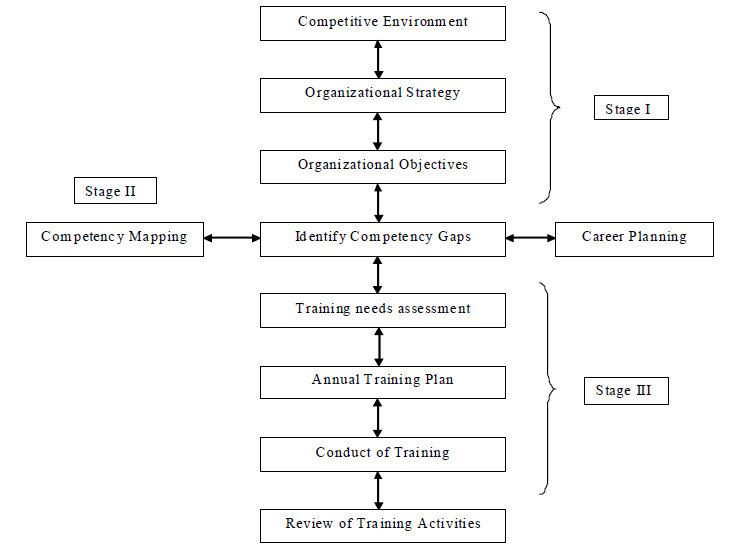
Stage of Executive Development Process
Stage I
In Stage I, at the macro level, there are three key elements are considered as
- Competitive advantage
- Organizational strategy
- Organizational objectives
The analysis of the competitive environment helps the organization to decide its competitive positioning in the marketplace, based on which the organizational strategy is drawn out in an attempt to transform or reposition of the organization.
Stage II
This stage deals with analysis on the competency mapping, identification of competency gap and career planning. This stage is the most important and crucial phase of the executive development process.
- In the competency stage which helps to capture the competencies of all the employees of the organization which includes the capacities of the management also.
- In the second stage, the organizational requirements and competency gap to be analyzed.
- In the third phase, this deals with identifying and verifying the organizational needs, individual growth and along with career planning of the executives.
Stage III
This stage deals with the activities involving training need assessment of individuals and of all employees based on which Annual Training Plan (ATP) is drawn.
Based on the annual training plan the employees are chosen to expose to either corporate training program, for internal training programs and external organizations.
Steps of Executive Development Process
- Analysis of Development Needs
- Appraisal of the Present Managerial Talent
- Planning Individual Development Programmes
- Establishing Training and Development Programme
- Evaluating Developing Programs
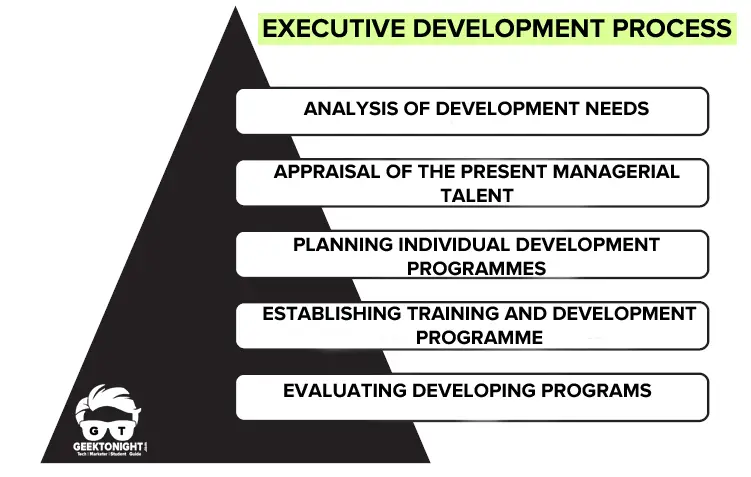
Analysis of Development Needs
First of all the present and future development needs of the organization are ascertained. It is necessary to determine how many and what type of executives are required to meet the present and future needs of the enterprise.
Appraisal of the Present Managerial Talent
A qualitative assessment of the existing executives is made to determine the type of executive talent available within the organization.
Planning Individual Development Programmes
Each one of us has a unique set of physical, intellectual and emotional characteristics. Therefore, the development plan should be tailor-made for each individual.
Establishing Training and Development Programme
The HR department prepares comprehensive and well-conceived programmes.
Evaluating Developing Programs
Considerable money, time and efforts are spent on executive development programmes. It is therefore natural to find out to what extent the programme’s objective has been achieved.
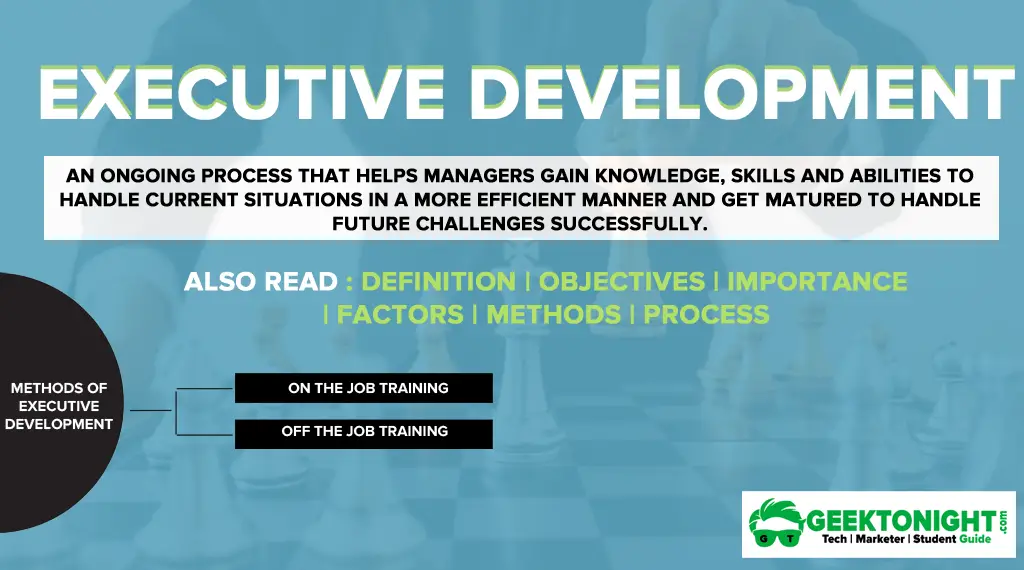
Human Resources Tutorial
(Click on Topic to Read)


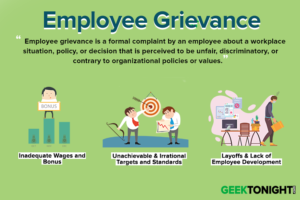
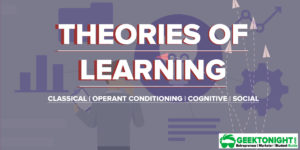

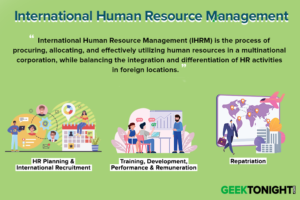


Great❤️